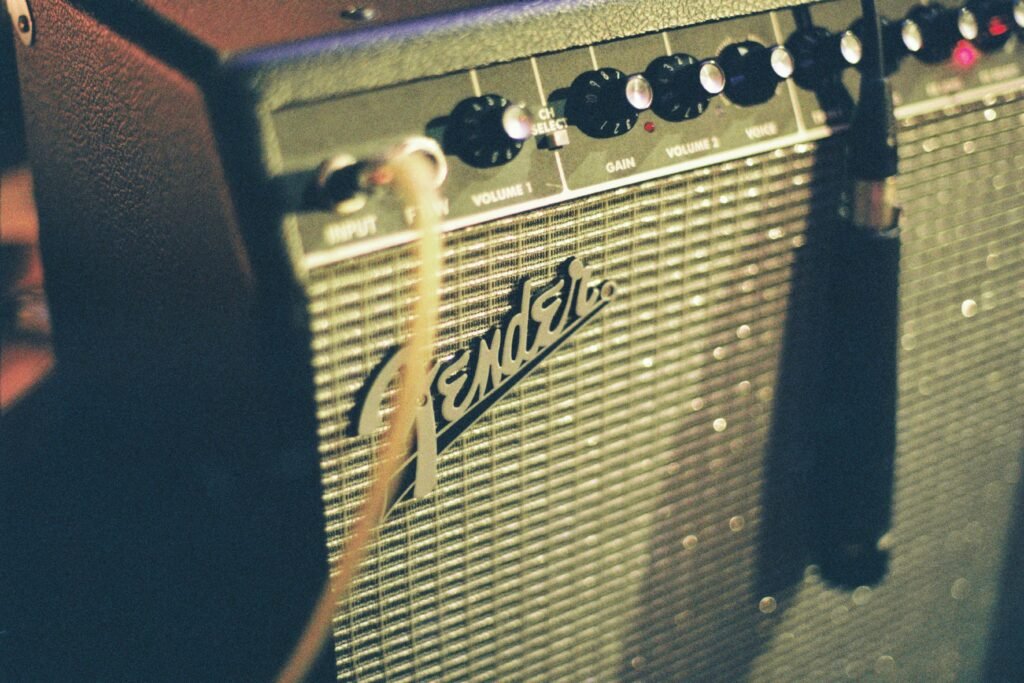When Power, Corruption & Lies arrived in May 1983, it marked a defining moment in the evolution of New Order. Coming just a year after their debut Movement, which still bore the shadow of Joy Division’s somber legacy, this second album stood as a bold step into new territory. Where Movement felt like a band in mourning, still grappling with the loss of Ian Curtis, Power, Corruption & Lies was their first true expression as New Order—confident, innovative, and ready to break from the past.
The early 1980s were a time of rapid change in music. Synth-pop and post-punk were beginning to intertwine, creating fresh sounds that reflected a shifting cultural mood. New Order emerged at the crossroads of these styles. With this album, they set out to redefine what post-punk could be. Instead of staying within the cold, guitar-driven palette that had defined Joy Division, they embraced electronics and dance rhythms without losing emotional depth. The band wanted to make music that moved both body and mind.
Sonic Exploration

Power, Corruption & Lies is a masterclass in sonic reinvention. The album’s production, handled largely by the band themselves with assistance from engineer Michael Johnson, signals a deliberate move toward clarity and control. Gone is the murky tension that clouded Movement. In its place is a brighter, more assertive sound where every synth line and bass groove feels precisely placed. The production doesn’t chase perfection, but it knows exactly what kind of imperfection it wants. It balances warmth and detachment, digital precision and human spontaneity.
Musical Arrangements
From the opening bars of “Age of Consent,” it’s clear that the band was no longer interested in simply extending Joy Division’s sound. Peter Hook’s bass is pushed forward in the mix, playing melodic lines that feel more like leads than rhythm. Synthesizers shimmer without overpowering, creating a spacious, almost optimistic atmosphere. Stephen Morris’s drumming, often interlaced with drum machines, provides a mechanical heartbeat that’s steady but never sterile. Gillian Gilbert’s keyboard work adds layers of texture, ranging from icy minimalism to lush, almost orchestral swells.
Vocally, Bernard Sumner takes a modest but effective approach. His delivery lacks polish, but this becomes part of the album’s charm. There’s a vulnerability in his voice that suits the themes of emotional ambiguity and technological distance. The vocals often sit low in the mix, blending with the instruments rather than rising above them, which reinforces the sense that the music is a collective, not a platform for ego.
Genre Elements
Genre-wise, the album stands at a unique intersection. It carries the DNA of post-punk but fuses it with the rhythmic backbone of electronic dance music. Tracks like “The Village” and “Your Silent Face” show clear influence from European synth-pop and electronic pioneers like Kraftwerk, while still retaining the brooding spirit of British indie. “586,” with its extended instrumental breaks and pulsing sequencers, hints at the house music explosion that was still a few years away. By weaving together elements of new wave, synth-pop, and proto-house, New Order created something that felt both timely and ahead of its time.
Lyrical Analysis

Unlike the introspective despair that defined Joy Division’s lyrics, the words on Power, Corruption & Lies lean toward ambiguity and emotional restraint. The album’s title promises weighty themes—political intrigue, moral compromise, and personal disillusionment—but New Order delivers these ideas through a filter of abstraction. The lyrics rarely address “power” or “corruption” directly. Instead, they explore more subtle forms of emotional manipulation, loneliness, and the breakdown of trust.
Bernard Sumner’s lyricism often reads like fragments of internal monologue. On “Age of Consent,” he sings of unreciprocated love with a sense of defiant resignation. “I’ve lost you, I’ve lost you, I’ve lost you,” he intones, evoking both heartbreak and acceptance. The words are simple, almost conversational, but they carry a quiet ache that lingers long after the song ends. “Your Silent Face” is another standout, where the lyrics paint a cold, existential portrait with lines like “You caught me at a bad time / So why don’t you piss off.” It’s a moment of raw honesty that’s both jarring and strangely beautiful.
Themes of disconnection and emotional opacity surface again and again. In “The Village,” the idea of community is turned inside out. Instead of unity, the song suggests isolation within shared spaces. “586” and “Ultraviolence” play more with repetition and mood than narrative structure, their lyrics more rhythmic than revelatory. This deliberate vagueness allows listeners to project their own meanings onto the songs, making the album feel deeply personal despite its cool, electronic exterior.
Emotional Impact
There is no grand narrative arc, but the emotional impact builds through nuance. The lyrics, paired with the music’s restrained intensity, evoke a world of suppressed feelings and distant longing. There’s melancholy here, but it’s not dramatic or self-pitying. It’s understated, the kind that simmers just below the surface. This emotional subtlety is what gives the album its lasting resonance. It doesn’t demand empathy—it earns it quietly.
Cohesion and Flow

Power, Corruption & Lies is a rare example of an album that achieves cohesion not through a strict narrative, but through mood, tone, and sonic identity. The sequence of tracks feels deliberate, yet never forced. Each song stands on its own, but together they form a seamless arc that captures the emotional ambiguity and technological intrigue that define the record.
Track Progression
The album opens with “Age of Consent,” an energetic yet bittersweet anthem that immediately sets the emotional tone. Its pulsing rhythm and soaring bassline introduce a new sense of momentum for the band. From there, the pace ebbs and flows rather than follows a linear path. “We All Stand” drops the energy into a more meditative groove, creating a space of reflection before lifting again with “The Village.” This interplay between brightness and detachment continues throughout the album, allowing it to breathe without ever losing its center.
The lack of traditional chorus structures and the subtle, often repetitive lyrical content lend the album a hypnotic quality. Songs like “5 8 6” and “Ultraviolence” act almost like rhythmic meditations, allowing the listener to drift between focus and abstraction. Despite the range of tempos and textures, there’s a strong stylistic throughline. The synths are cold but not sterile. The beats are mechanical but often paired with warm, human basslines. This balance is what gives the album its unified voice.
Thematic Consistency
Thematically, there’s a consistent sense of distance and detachment. Even at its most danceable, the music never slips into pure escapism. There’s always a trace of tension, a feeling that something deeper is at play beneath the surface. This emotional thread is what keeps the album grounded. It doesn’t need a literal story to feel cohesive. The moods and motifs—emotional isolation, fractured communication, technological intrusion—are enough to tie the songs together.
Standout Tracks and Moments
While Power, Corruption & Lies thrives on its cohesion, several tracks rise to the surface as defining moments, either through sheer innovation or emotional resonance. These songs not only anchor the album—they crystallize New Order’s shift from post-punk progeny to electronic pioneers.
Age of Consent
“Age of Consent” is the clearest declaration of this new identity. It bursts out of the gate with Peter Hook’s bassline, which carries the melody with a confidence that is both joyous and bittersweet. The song is deceptively upbeat, masking its lyrical tension beneath a rush of rhythm and shimmering synths. Its opening bars are instantly memorable, and its urgency captures the spirit of reinvention that drives the album.
Your Silent Face
“Your Silent Face” is perhaps the album’s most elegant moment. Built on a slow, Kraftwerk-inspired synth progression, it drifts with an almost cinematic grace. The song’s melodic restraint gives it a sense of quiet grandeur. Its emotional weight lies in the details—a mournful electronic refrain, a dry, detached vocal, and a famously blunt lyric that lands like a slap in an otherwise serene landscape. It’s New Order at their most refined and emotionally enigmatic.
5 8 6
“5 8 6” stands out for its structural experimentation. It feels like a blueprint for future dance music, with layered sequencers and a pulsing rhythm that predates the acid house movement by years. The track transitions between mechanical repetition and sudden flourishes, keeping the listener in a state of alert immersion.
Leave Me Alone
Then there’s “Leave Me Alone,” the closing track, which quietly reintroduces guitars and a more traditional band setup. It doesn’t shout for attention but leaves a lasting impression. The song’s wistful tone, underscored by Bernard Sumner’s weary vocal delivery, feels like a closing thought, a final request for solitude that echoes long after the record ends.
Artistic Contribution and Innovation

Power, Corruption & Lies did not just redefine New Order’s sound—it shifted the direction of an entire genre. Released at a time when post-punk was beginning to fracture into more dance-oriented subgenres, the album became a blueprint for how electronic music could integrate with rock without sacrificing emotional depth or artistic integrity.
In the early 1980s, most bands had to choose a side: embrace the cold futurism of synthesizers or cling to the raw energy of guitar-based post-punk. New Order refused to pick. Instead, they carved out a middle path that was both forward-thinking and deeply human. With Power, Corruption & Lies, they didn’t just blend styles—they reimagined what a modern band could be. Their work helped set the stage for synth-pop, alternative dance, and eventually the rave and electronic movements of the late ’80s and early ’90s.
Innovation
The album’s innovation lies in both its method and its mindset. By self-producing much of the record, New Order maintained a raw independence while still crafting a sound that was sleek and modern. They used sequencers and drum machines not as novelties but as tools for genuine expression. “5 8 6,” for example, manipulates rhythm and tempo in ways that predate techno. “Your Silent Face” dares to be sparse and spacious at a time when maximalism was dominating the charts.
Just as important is the band’s rejection of standard rock conventions. There are few traditional choruses, no reliance on guitar solos, and lyrics that resist easy interpretation. This avoidance of formula gave the album a timeless quality. It wasn’t trying to be trendy—it was trying to be true to its own vision. That risk paid off, as the album now feels just as vital in today’s genre-fluid landscape as it did in 1983.
In the broader music industry, Power, Corruption & Lies helped prove that dance music could have soul and that post-punk could be playful. It blurred the lines between indie rock and club culture, setting a precedent for acts ranging from Depeche Mode and Pet Shop Boys to later artists like LCD Soundsystem and Caribou.
Closing Thoughts
Power, Corruption & Lies stands as a landmark in both New Order’s career and in the evolution of modern music. It is a record that manages to be experimental without alienating, emotional without becoming overwrought, and danceable without ever pandering to the mainstream. Its strength lies in its restraint—in its ability to suggest rather than declare, to evoke rather than explain.
The album’s production is sophisticated but not slick, its arrangements carefully balanced between analog grit and digital polish. Lyrically, it trades directness for ambiguity, allowing each listener to find their own meaning. The tracklist flows with a kind of emotional logic, where each song feels like a new chapter in the same interior novel. And at its core is a spirit of innovation that refuses to be boxed in, blending genres with ease and daring to look forward when others were still looking back.
If there is a weakness to be found, it may lie in the album’s cool detachment. For some listeners, the emotional reserve and lyrical opacity might feel distant rather than inviting. There are no grand anthems here, no easy catharsis. But that is also part of the album’s genius—it respects the intelligence of its audience and trusts them to meet it halfway.
In the context of New Order’s career, Power, Corruption & Lies is the turning point. It’s the moment they stopped being Joy Division’s shadow and started casting one of their own. It set the tone for everything that followed, from Low-Life to Technique, and its influence rippled outward for decades.
Rating: 9/10.
This is not a perfect album—but its imperfections are what make it feel alive. It doesn’t scream for attention. Instead, it rewards patience, curiosity, and repeated listening. Power, Corruption & Lies isn’t just a great New Order album. It’s one of the most quietly revolutionary records of its time.
